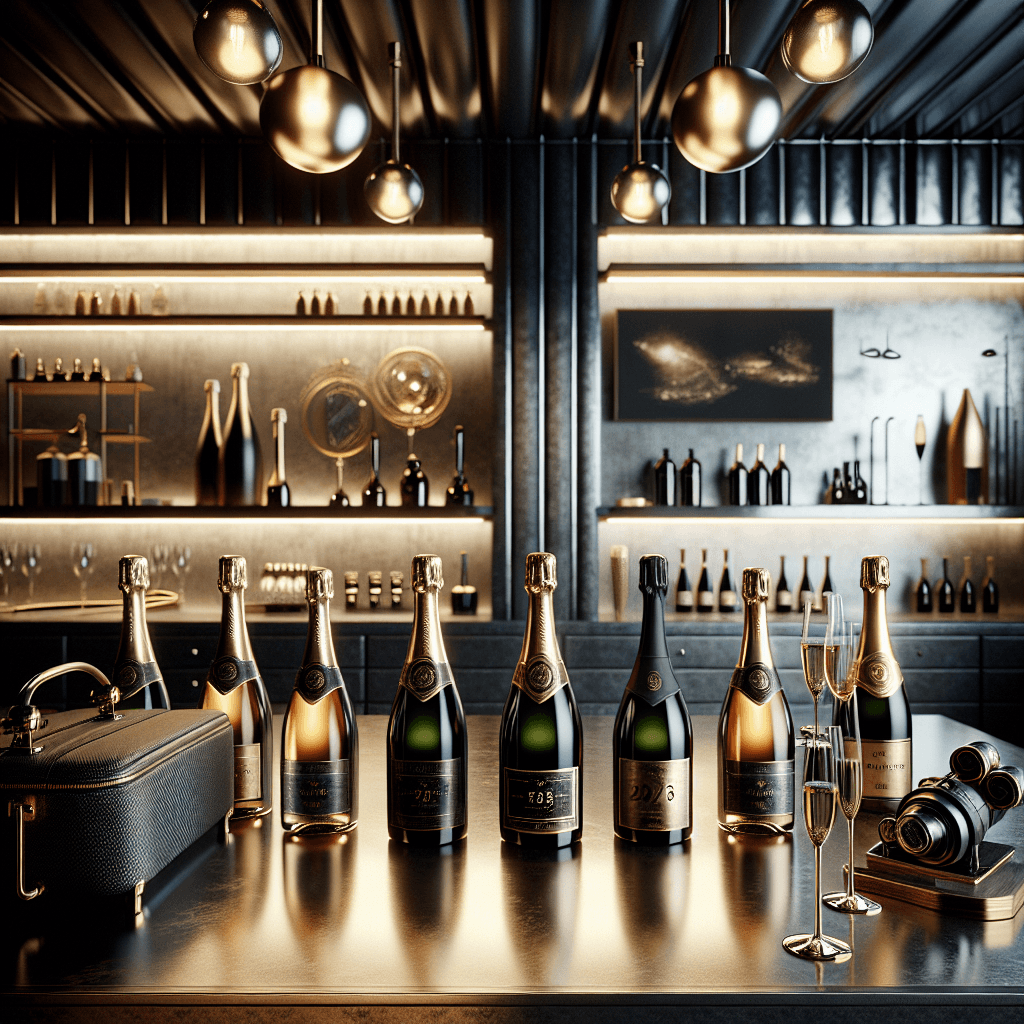How to distinguish investment-grade bottles from everyday bubbles
The allure of Champagne is timeless, weaving together the art of winemaking with the essence of luxury and celebration. This effervescent beverage, often associated with prestige and fine living, offers a fascinating dichotomy between its vintage and non-vintage varieties. Understanding these distinctions is essential for anyone passionate about the cultural and artisanal value of Champagne.
- Understanding Champagne: More Than Just Bubbles
- The Art of Vintage Champagne
- The Craft Behind Non-Vintage Champagne
- Collecting Cuvées: What to Look For
- Cultural Significance of Champagne
- Connoisseurship in Champagne Collection
Understanding Champagne: More Than Just Bubbles
Champagne, a symbol of refinement and celebration, originates from the Champagne region in France, where the cool climate and unique terroir contribute significantly to the wine’s quality. The process of creating Champagne, known as Méthode Champenoise, involves a secondary fermentation in the bottle, creating the bubbles characteristic of this prestigious drink.
Champagne is categorized mainly into two types: vintage and non-vintage. The distinction lies in the blend and the years of harvest. Non-vintage Champagne blends multiple years to maintain a consistent house style, while vintage Champagne is produced from grapes of a single year’s harvest, reflecting the unique characteristics of that specific year.
The Art of Vintage Champagne
Vintage Champagne is a celebration of a particular year’s climatic conditions, and is only made when the grape harvest is of exceptional quality. It spends at least three years aging in the producer’s cellars, though many top houses age it much longer to enhance its complexity and flavor profile.
The decision to declare a vintage year lies with each Champagne house, which assesses the distinctiveness and quality of the harvest. Vintage Champagnes are often richer, more robust, and complex, offering a deeper dive into the nuances of Champagne’s terroir and the winemaker’s artistry. They are highly prized for their ageability and their capacity to reflect the subtleties of their vintage year.
Notable vintage Champagnes, such as Dom Pérignon, are renowned for their precision in blending and meticulous production processes, often becoming the highlight of collections and tasting events.
The Craft Behind Non-Vintage Champagne
Non-vintage Champagne, which accounts for the majority of the market, is the flagship of a Champagne house’s style. It is blended from wines of different years, with the goal of achieving a consistent flavor profile from year to year. This style requires a masterful skill in blending, ensuring that the house style is maintained despite the varying characteristics of individual harvests.
The consistency and reliability of non-vintage Champagne make it a favorite among consumers who appreciate the signature style of a Champagne house. It is typically aged for a minimum of 15 months, although many houses exceed this requirement, allowing for greater development of flavor.
Collecting Cuvées: What to Look For
Collecting Champagne involves an appreciation of both the craftsmanship behind the bottle and the historical and cultural narratives encapsulated by each cuvée. When selecting Champagnes for a collection, connoisseurs often consider several factors:
- Producer and House Style: The reputation and historical significance of a Champagne house can play a crucial role in the collectibility of a bottle.
- Vintage Quality: Particularly outstanding vintage years are sought after for their potential in complexity and depth.
- Rarity and Exclusivity: Limited edition releases, such as special cuvées or Blanc de Blancs, are highly desirable for their uniqueness and artisanal value.
- Storage and Provenance: Proper storage conditions and well-documented provenance are essential for maintaining the quality and authenticity of collectible Champagnes.
Cultural Significance of Champagne
Champagne is not merely a drink; it is a cultural icon that symbolizes celebration, success, and luxury. The tradition of Champagne production is deeply rooted in the history of its region, reflecting centuries of winemaking innovation and excellence. The global appreciation of Champagne is a testament to its enduring cultural impact, making it a staple at significant events and a symbol of artistic and culinary heritage.
Connoisseurship in Champagne Collection
Understanding the nuances between vintage and non-vintage Champagne is crucial for any collector or enthusiast aiming to deepen their appreciation of this exquisite beverage. Each bottle of Champagne tells a story of its year, its maker, and its origin, offering a unique insight into the world of luxury winemaking.
For those passionate about the artistry and history behind each cuvée, collecting Champagne provides not only the pleasure of tasting but also the joy of connecting with a rich heritage that continues to sparkle and inspire across generations.
For further reading on the intricacies of Champagne production and its cultural impact, explore authoritative sources such as the official Champagne region website or luxury wine publications.



